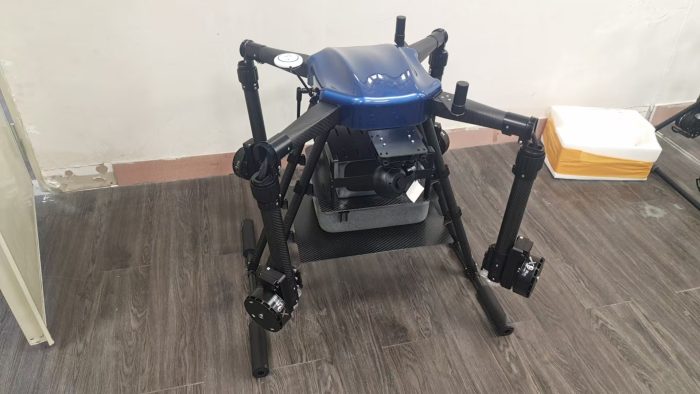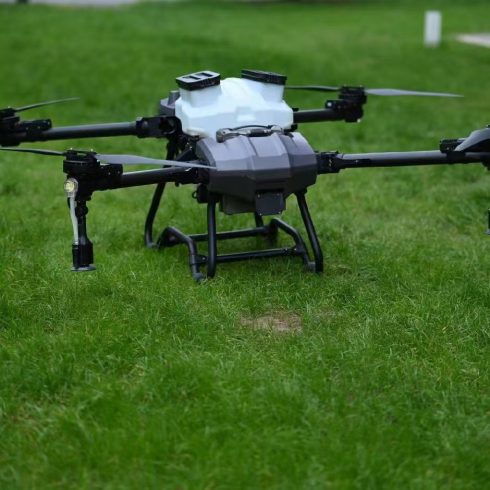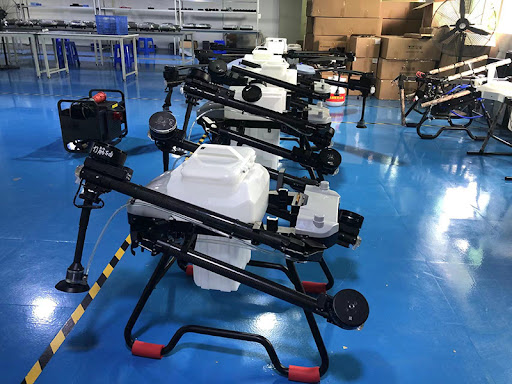![图片[1]-Latest Innovations in Pesticide Spraying Drones for Precision Agriculture-msoen](https://www.msoen.com/wp-content/uploads/2025/04/0f937885e9184642-1024x849.jpg)
![图片[2]-Latest Innovations in Pesticide Spraying Drones for Precision Agriculture-msoen](https://www.msoen.com/wp-content/uploads/2025/04/2caef68db4184641-768x1024.jpg)
![图片[3]-Latest Innovations in Pesticide Spraying Drones for Precision Agriculture-msoen](https://www.msoen.com/wp-content/uploads/2025/04/27fe7401e7184641-1024x768.jpg)
As global demand for sustainable food production rises, pesticide spraying drones have emerged at the forefront of modern agriculture. These unmanned aerial vehicles (UAVs) are no longer niche gadgets but essential tools for large‑scale farms and specialty growers alike. This article explores recent technological breakthroughs, regulatory shifts, and real‑world applications that are driving the rapid adoption of drone pesticide application.
Rapid Market Growth Driven by Technological Advances
In the past five years, the market for agricultural drones has expanded at a compound annual growth rate (CAGR) exceeding 25%. Two main factors fuel this surge:
Falling Hardware Costs
Advances in battery technology and mass‑production of UAV components have driven down the price per unit, making precision farming drones affordable for mid‑sized operations.
Software and AI Integration
Modern UAV sprayers now feature onboard AI that can detect plant stress, disease hotspots, and optimal spray patterns in real time—reducing pesticide use by up to 30%.
These developments have shifted drone spraying from experimental to mainstream, with thousands of hectares treated daily in key agricultural regions worldwide.
Key Technological Breakthroughs in UAV Sprayers
- Swarm Coordination
Multiple drones can now operate in coordinated “swarms,” covering large fields in parallel. Swarm algorithms optimize flight paths to avoid overlap and ensure uniform pesticide distribution. - Computer Vision for Spot Treatment
Integrated multispectral cameras identify pest‑infested areas at early stages. The drone’s flight control system then adjusts nozzle output to target only affected zones, minimizing chemical use. - Extended Flight Times
New battery chemistries and lightweight carbon‑fiber frames have extended average flight times from 20 minutes to over 40 minutes per charge, doubling operational efficiency. - Autonomous Charging Stations
Ground‑based charging pads allow drones to land, swap batteries, and resume spraying without human intervention—enabling 24/7 operations during critical application windows.
Regulatory Trends Shaping Drone Pesticide Application
As UAV sprayers become more prevalent, governments are updating regulations to balance innovation with safety:
Certification Requirements
Many countries now require drone pilots to obtain specialized agricultural UAV licenses, ensuring operators understand both flight safety and pesticide handling protocols.
Geo‑fencing and No‑Fly Zones
Built‑in geo‑fencing prevents drones from entering sensitive areas such as schools, hospitals, or wildlife reserves. This protects public safety and wildlife habitats.
Data Reporting Mandates
Some regions mandate that drone operators submit spray logs—including GPS tracks and chemical usage—to local agricultural authorities for traceability and environmental monitoring.
These regulations, while adding compliance steps, ultimately build trust and encourage wider adoption among conservative farming communities.
Case Study: Precision Rice Paddy Treatment
In Southeast Asia, rice paddies present unique challenges—waterlogged fields, narrow bunds, and high humidity. Traditional boom sprayers risk soil compaction and uneven coverage. In contrast, pesticide spraying drones have delivered:
30% Reduction in Chemical Use
By employing computer vision to identify early pest outbreaks, drones treated only 40% of the field area rather than blanket‑spraying the entire paddy.
50% Faster Application
Autonomous flight paths and high‑capacity nozzles enabled a single drone to cover 25 hectares per day—double the throughput of conventional methods.
Improved Worker Safety
Operators remained on dry land, controlling flights remotely and avoiding direct exposure to chemicals and muddy terrain.
Future Outlook: AI, IoT, and Beyond
The next generation of drone farming technology will see deeper integration with the Internet of Things (IoT) and machine learning:
Real‑Time Farm Management Dashboards
Drones will feed live spray data into centralized platforms that track crop health, weather forecasts, and supply‑chain logistics—allowing farmers to make data‑driven decisions.
Predictive Pest Modeling
AI models trained on historical drone imagery will forecast pest outbreaks days in advance, triggering automatic drone missions to apply prophylactic treatments.
Hybrid Drone‑Ground Systems
Coordinated operations between aerial sprayers and ground‑based robots will optimize tasks: drones handle high‑level applications, while ground units perform spot weeding and soil sampling.
Conclusion
Pesticide spraying drones are revolutionizing modern agriculture by offering precision, efficiency, and enhanced safety. With ongoing advances in AI, battery technology, and regulatory frameworks, these UAV sprayers will become indispensable assets for farmers aiming to increase yields while reducing environmental impact. Early adopters stand to gain significant cost savings and productivity boosts—making now the ideal time to integrate drone technology into your precision agriculture toolkit.












暂无评论内容